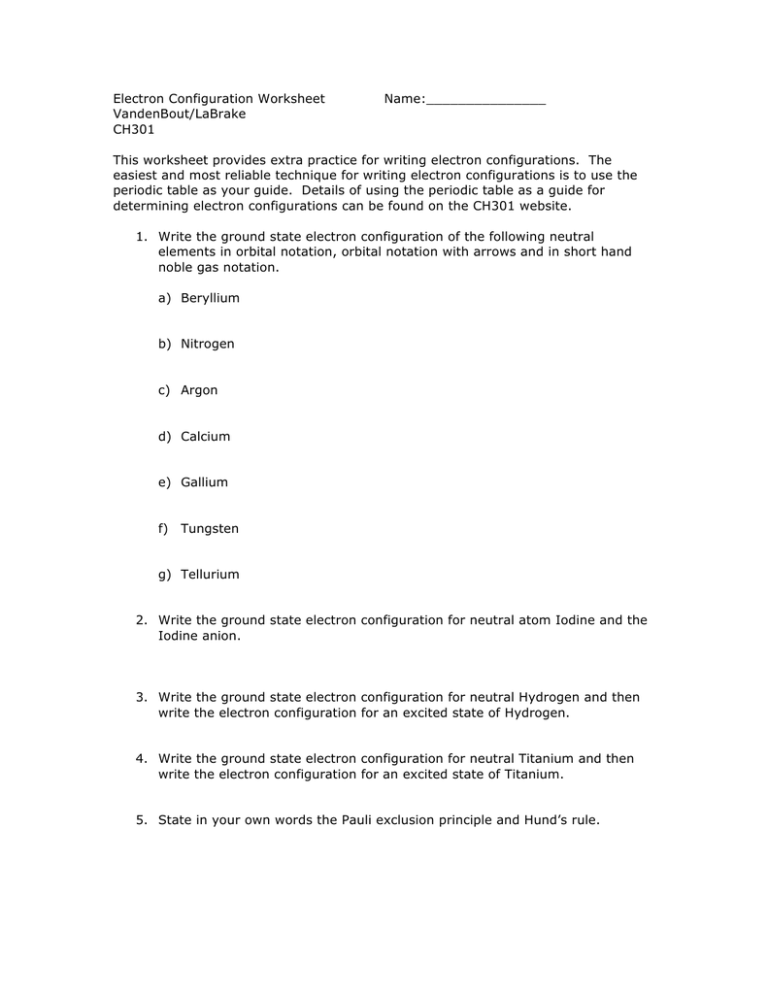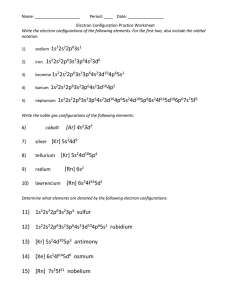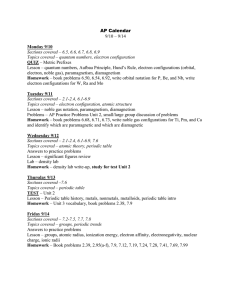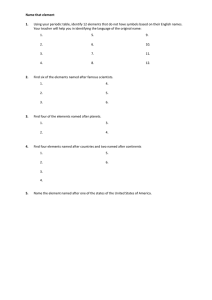Electron Configuration Worksheet: Chemistry Practice
advertisement

Electron Configuration Worksheet VandenBout/LaBrake CH301 Name:_______________ This worksheet provides extra practice for writing electron configurations. The easiest and most reliable technique for writing electron configurations is to use the periodic table as your guide. Details of using the periodic table as a guide for determining electron configurations can be found on the CH301 website. 1. Write the ground state electron configuration of the following neutral elements in orbital notation, orbital notation with arrows and in short hand noble gas notation. a) Beryllium b) Nitrogen c) Argon d) Calcium e) Gallium f) Tungsten g) Tellurium 2. Write the ground state electron configuration for neutral atom Iodine and the Iodine anion. 3. Write the ground state electron configuration for neutral Hydrogen and then write the electron configuration for an excited state of Hydrogen. 4. Write the ground state electron configuration for neutral Titanium and then write the electron configuration for an excited state of Titanium. 5. State in your own words the Pauli exclusion principle and Hund’s rule. The Aufbau principle works remarkably well for predicting the ground state electron configurations for the majority of the elements on the periodic table. However, there are some regions on the periodic table in which the Aufbau principle is not entirely accurate in predicting the ground state configuration. In general, in this class when asked to write the ground state configuration on an assessment, we will choose an element that follows the Aufbau principle. Except, we will expect you to be familiar with a few common exceptions. These exceptions occur for elements near a ½ full or full d subshell. For some reason, an electron will be promoted from the “lower energy” ns subshell to the (n-1)d subshell when the d subshell can obtain a ½ full or full status. We see this occurring with Chromium and Molybdenum (but not Tungsten), and in the case of Copper, Silver and Gold. 6. Write the ground state electron configuration of the following neutral elements in orbital notation, orbital notation with arrows and in short hand noble gas notation. a) Copper b) Chromium c) Molybdenum d) Silver 7. Which ground state elements correspond to the following electron configurations? a) b) c) d) [Rn] 5f146d37s2 [Ne] 3s23p4 [Xe] 4f145d66s2 [Xe] 4f145d106s1




